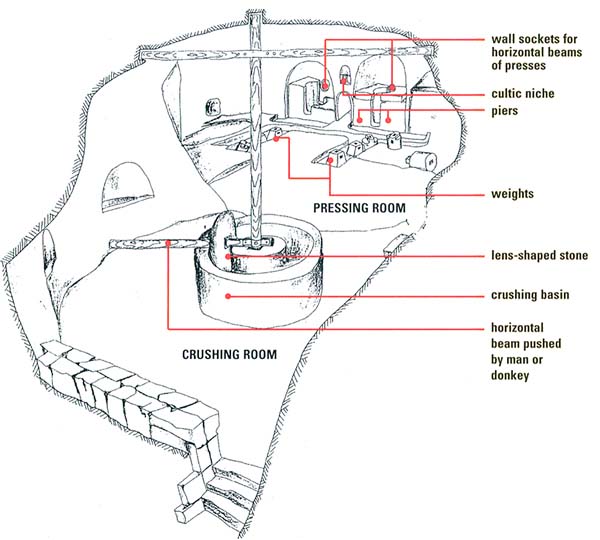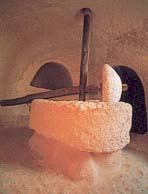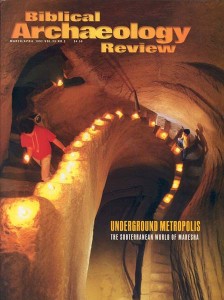The Olive Oil Factory
Sidebar to: Underground Metropolis: The Subterranean World of Maresha
More than 2,000 years before film director Fritz Lang created “Metropolis,” his stark futuristic account of an underground factory town, workers at Maresha slaved away in subterranean plants, producing olive oil for export to Egypt. The drawing (below) depicts one of the site’s 22 remaining underground olive oil factories—complete with a crushing basin in the foreground and two presses against the rear wall (the drawing shows only the stone remains of the presses; a reconstructed press, with stone weights hanging from a horizontal beam, appears in the below photo). During the Hellenistic period (332–112 B.C.E.), residents squeezed approximately 300 metric tons of olive oil a year.


In the autumn, inhabitants of Maresha harvested olives from the orchards that once grew in the valleys and on the hills surrounding their city. The fruits were then brought underground and placed in round crushing basins measuring 5 to 6 feet in diameter (see photo, below). A lens-shaped stone (orbis in Latin, memel in Hebrew), resting on its edge, reduced the olives to a pulp. A man (or perhaps a donkey) rotated the stone by pushing or turning a short horizontal beam through the center of the stone.
Already a library member? Log in here.
Institution user? Log in with your IP address.

